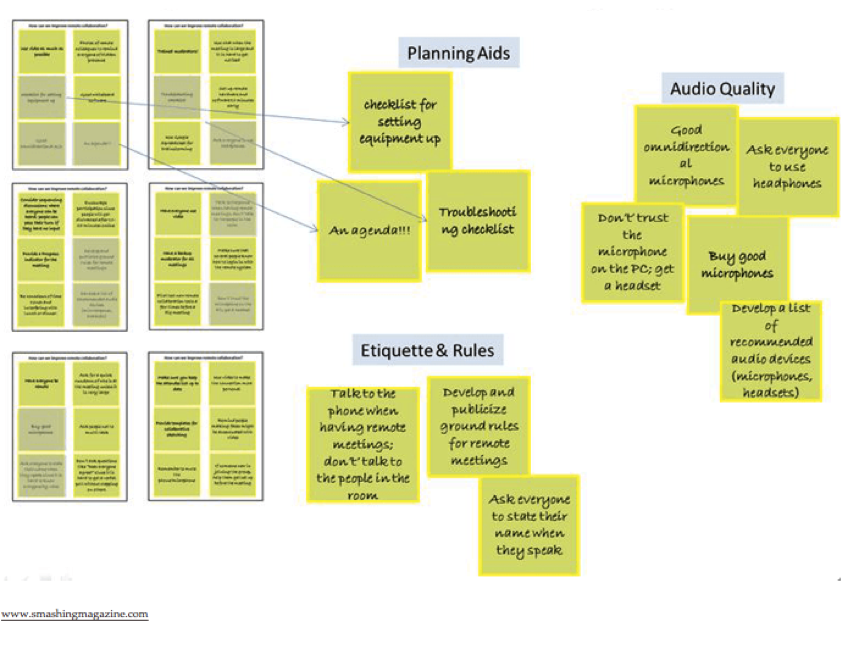Affinity Maps
Once you have a pile of ideas on the table from your idea generation session, you need a way to sift through them. Affinity grouping is a good way to do this.
You may have already started to arrange things that are similar to each other together—these are affinity groups. Post-it notes are easy to move around on a table or poster board. At first, there may be some very obvious affinity groups, but as the sorting progresses, you may have some discussions in the group as to where something fits. If, after discussion, one idea seems appropriate in more than one group, then make another post-it and move on. It’s important not to belabor the process. (Try not to have too many groups, though.)
Once you have your affinity groups, begin the process of elimination. You began the process of idea generation with no holds barred—every idea went on the table. Now it’s time to weed out some of the ones that the group does not want to pursue. (Don’t discard these ideas! Put them to one side—they may be useful going forward.)
Look at each affinity group in turn and remove one idea that seems less than fertile. Go around the affinity groups until all of the “low-hanging fruit has been taken away. This should happen quickly, but not without consideration and discussion.
Once you get down to the few ideas that are left, begin a more deliberate process of elimination. If you focus more on saving the stronger ideas rather than eliminating the weaker ones, the process will be more productive.
Ultimately, you want to get down to the number of ideas that your group can reasonably explore. This might be one idea only, or you might have the resources to be able to have two or three ideas that individuals or small groups can explore. In that case, you will have to go through another round of assessments.
Once you have selected your idea, you can begin the process of developing it.
REMEMBER: Do not discard the old ideas—I keep all of my rough drawings and research handy until the project is done. You never know when an old idea may come in handy ( . . . and many of my ideas get put in scrap books for further inspiration).

